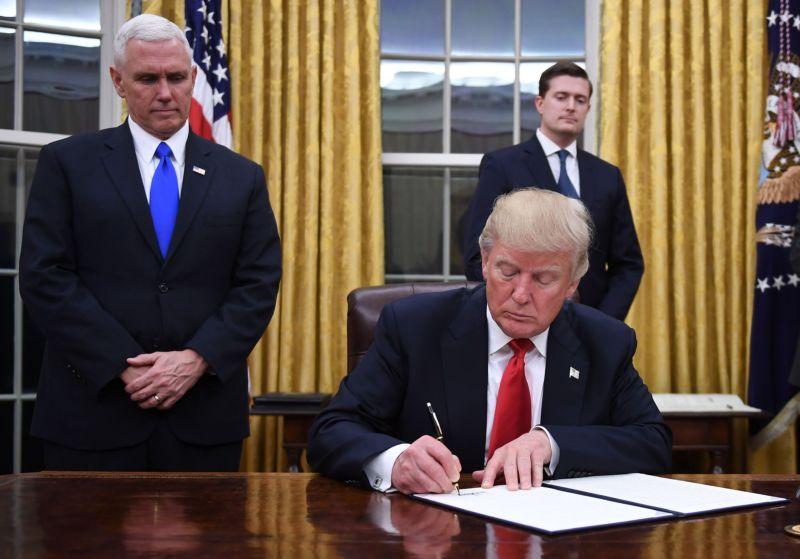
Jim Watson/AFP/Getty Images)
Last week was a busy one for controversial executive orders, and this week started with another.
On Monday, President Trump signed a far-reaching Executive Order[2] directing federal agencies to get rid of two existing regulations for every new regulation added—regardless of almost any other consideration. Specifically, the order says that “unless prohibited by law,” agencies “shall identify at least two existing regulations to be repealed.” The EO also states that “the total incremental cost of all new regulations, including repealed regulations, to be finalized this year shall be no greater than zero.”
In other words, the costs imposed by repealed rules will have to, at a minimum, equal the costs imposed by any new rules.
Currently there are many questions about how this rule would work. For example, it could be particularly difficult for the Environmental Protection Agency (EPA) to follow this order while carrying out its duties. As InsideEPA notes[3], many existing EPA rules are specifically required by law, or the regulations exist to clarify how states and other entities can meet requirements in federal law.
The directive to offset costs does not appear to take into account the monetary benefits of any regulations, either. As part of the rule-making process, the EPA already provides assessments of the economic costs and benefits of regulations (like the Clean Air Act, for example[4]). Many rules are estimated to produce society-wide economic benefits greater than the costs borne by those forced to meet pollution standards. (Non-economic benefits for human and ecosystem health are, of course, difficult to quantify.) Under this executive order, the goal is purely to reduce the costs of complying with regulations. And imbued with new significance, official estimates of costs may soon become more controversial.
Last week, President Trump claimed[5], “We think we can cut regulations by 75 percent. Maybe more, but by 75 percent.”
References
- ^ Enlarge (cdn.arstechnica.net)
- ^ far-reaching Executive Order (www.whitehouse.gov)
- ^ notes (insideepa.com)
- ^ for example (www.epa.gov)
- ^ claimed (www.npr.org)